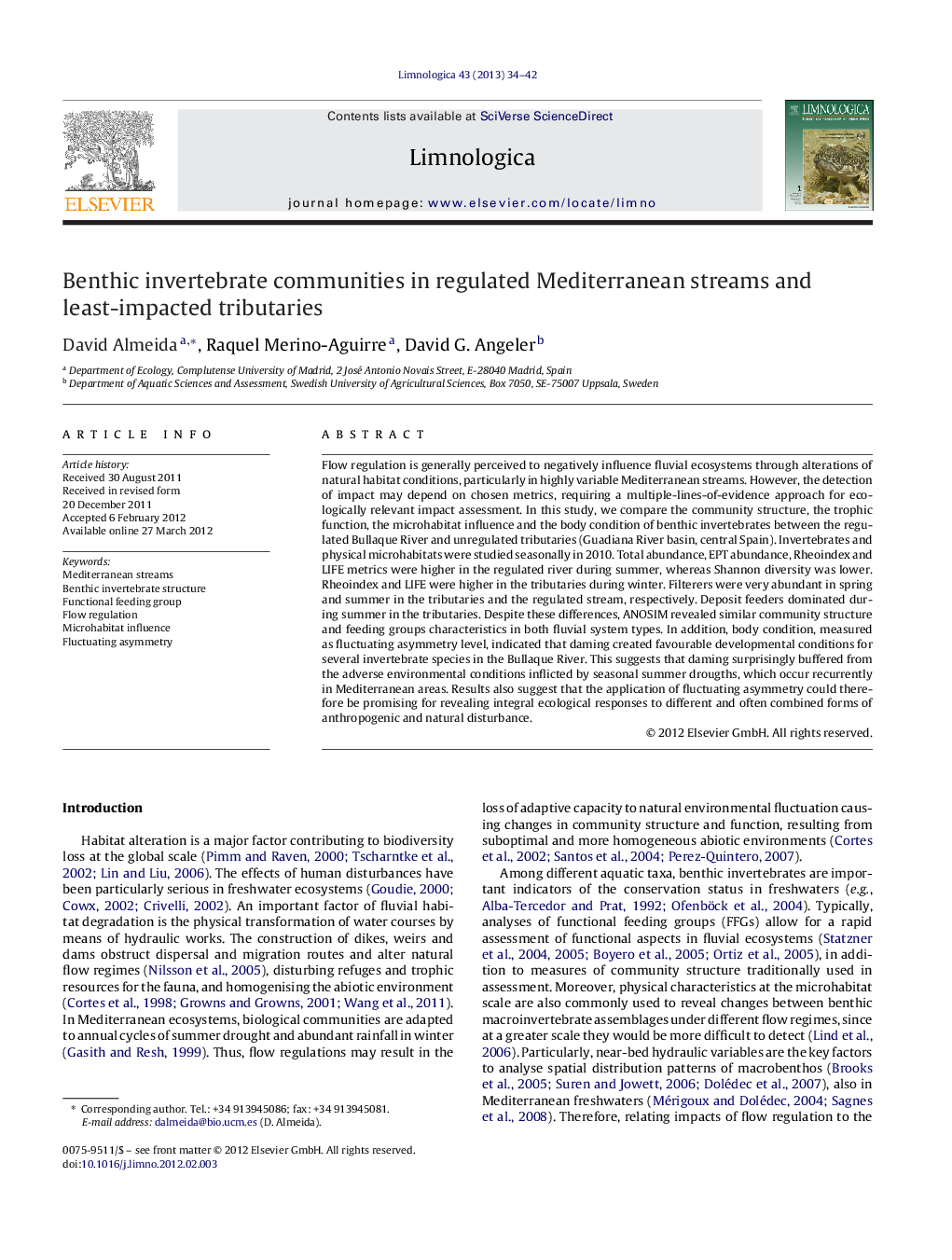| Article ID | Journal | Published Year | Pages | File Type |
|---|---|---|---|---|
| 4400553 | Limnologica - Ecology and Management of Inland Waters | 2013 | 9 Pages |
Flow regulation is generally perceived to negatively influence fluvial ecosystems through alterations of natural habitat conditions, particularly in highly variable Mediterranean streams. However, the detection of impact may depend on chosen metrics, requiring a multiple-lines-of-evidence approach for ecologically relevant impact assessment. In this study, we compare the community structure, the trophic function, the microhabitat influence and the body condition of benthic invertebrates between the regulated Bullaque River and unregulated tributaries (Guadiana River basin, central Spain). Invertebrates and physical microhabitats were studied seasonally in 2010. Total abundance, EPT abundance, Rheoindex and LIFE metrics were higher in the regulated river during summer, whereas Shannon diversity was lower. Rheoindex and LIFE were higher in the tributaries during winter. Filterers were very abundant in spring and summer in the tributaries and the regulated stream, respectively. Deposit feeders dominated during summer in the tributaries. Despite these differences, ANOSIM revealed similar community structure and feeding groups characteristics in both fluvial system types. In addition, body condition, measured as fluctuating asymmetry level, indicated that daming created favourable developmental conditions for several invertebrate species in the Bullaque River. This suggests that daming surprisingly buffered from the adverse environmental conditions inflicted by seasonal summer drougths, which occur recurrently in Mediterranean areas. Results also suggest that the application of fluctuating asymmetry could therefore be promising for revealing integral ecological responses to different and often combined forms of anthropogenic and natural disturbance.
